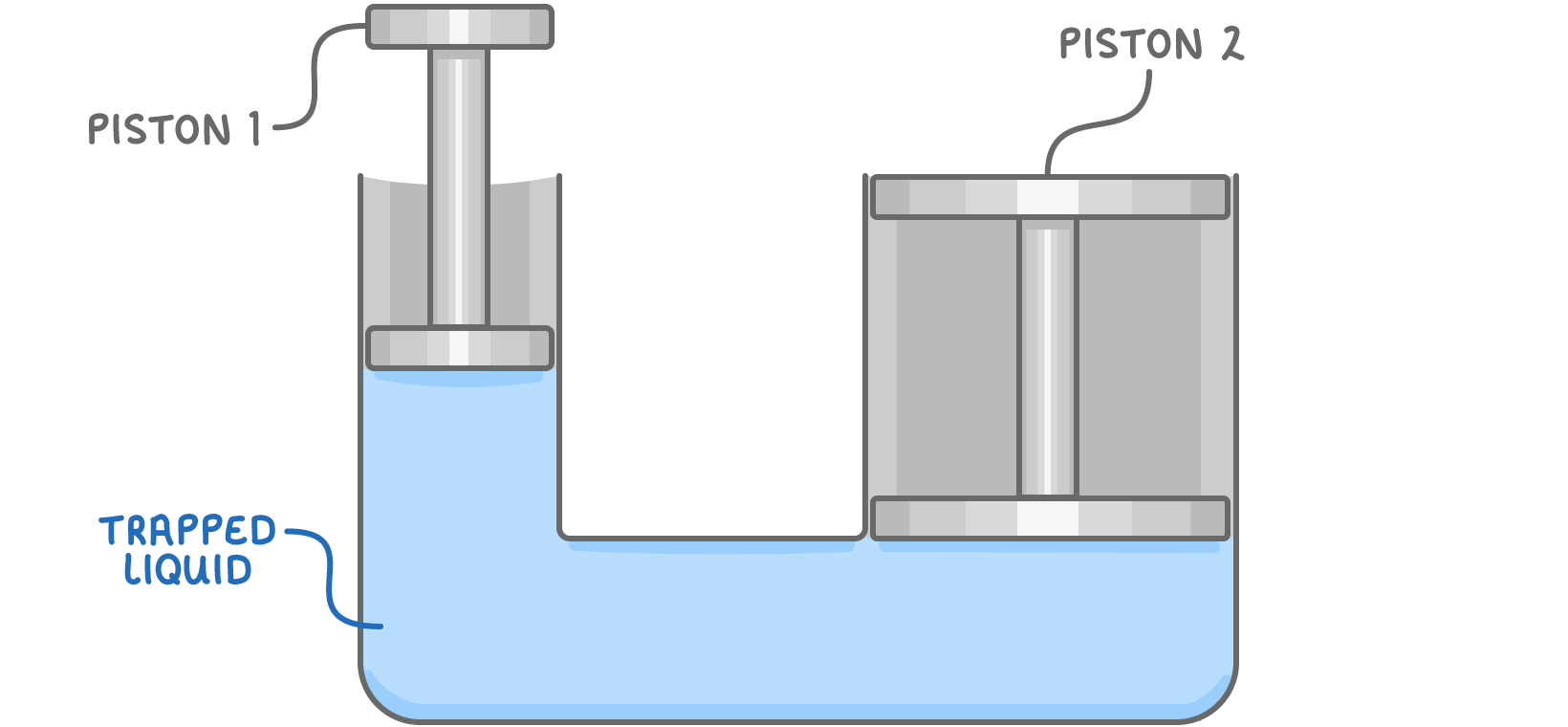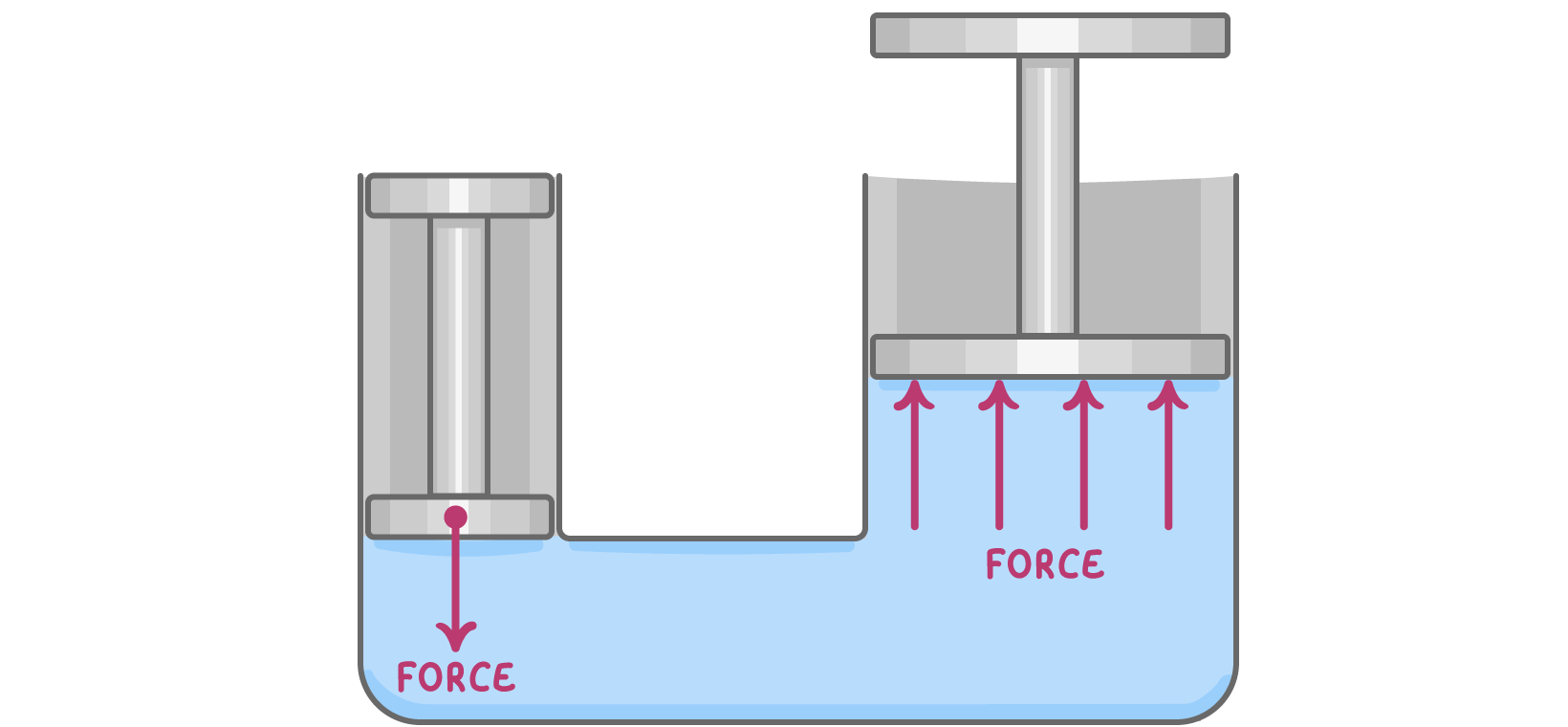Hydraulics
This lesson covers:
1How hydraulic systems can be used to multiply forces
2How to calculate pressure, force and area using the pressure equation in hydraulic systems
Hydraulic systems
Hydraulic systems use a liquid to transmit a force.

In a simple hydraulic system there are two pistons and a liquid trapped between them.
Hydraulic system calculations
The diagram below shows a 2 piston hydraulic system.

Piston 1 has an area of 0.1 m2 and piston 2 has an area of 0.4 m2.
A student exerts a downward force of 1.5 N on piston 1.
We can use the equation linking pressure, force and area to calculate the upward force acting on piston 2.
This is how we calculate the force experienced by piston 2:
What is the equation linking pressure, force, and area in a hydraulic system?
P = F - A
P = F x A
P = F ÷ A
P = F + A
|
What is the main purpose of a hydraulic system?
To transmit electricity
To transmit a force
To transmit sound waves
To transmit heat
|
In a hydraulic system, where is the pressure the same?
Only at the top of the system
Nowhere in the system
Only at the bottom of the system
Everywhere in the liquid
|
A force of 5 N is exerted on a piston of surface area 0.2 m2.
Calculate the force experienced at the second piston if the area of the second piston is 0.15 m2.
33.3 N
25 N
29 N
3.75 N
|
A force of 15 N is applied to a piston of surface area 0.1 m2. The force at the second piston is higher than the force exerted on piston 1.
Which statement correctly describes the surface area of the pistons?
Surface area of piston 1 > surface area of piston 2
Surface area of piston 1 < surface area of piston 2
Surface area of piston 1 = surface area of piston 2
|

